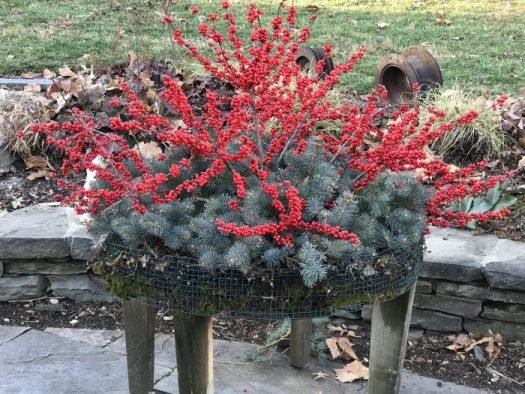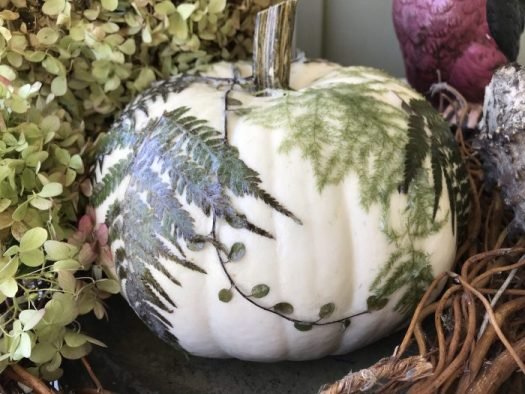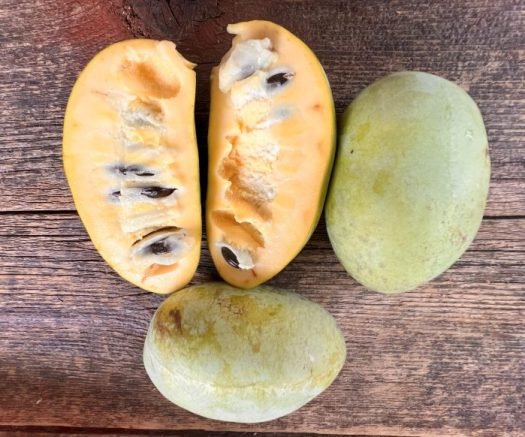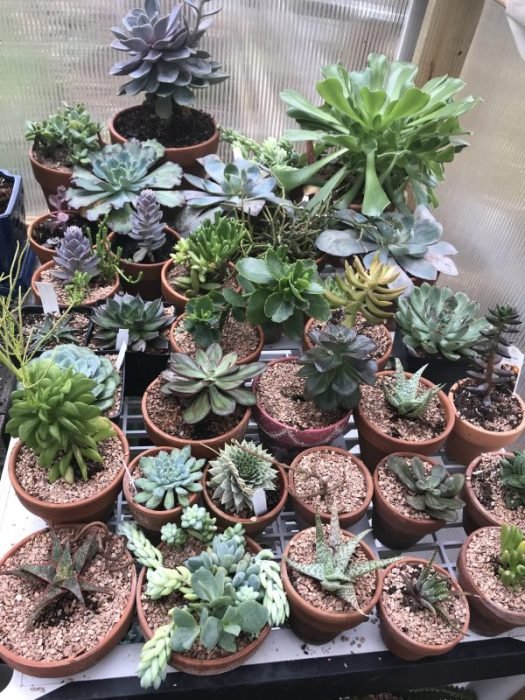Everyone is decorating the halls, cutting green branches from their property and using them to decorate. Foraging is the modern way of describing the time-honored tradition of using what you already have. I’ve even picked up tree scraps piled up at my local store that sells fresh Christmas trees.
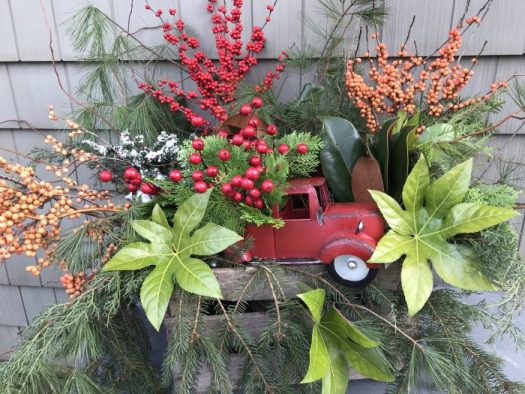
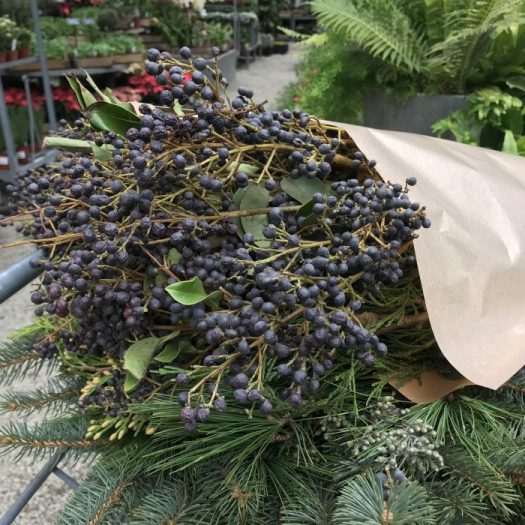
When spruce cones begin to form on the trees, I venture out with my long reach loppers and trim them to create fabulous accents in planters and containers.
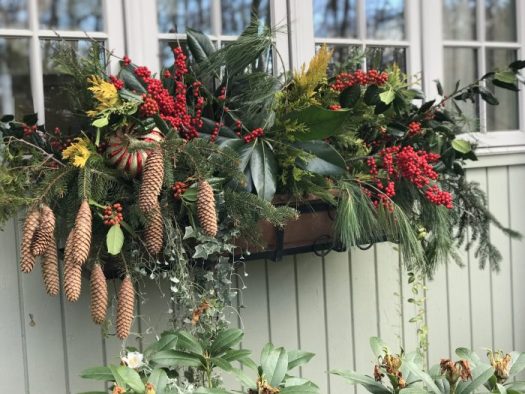
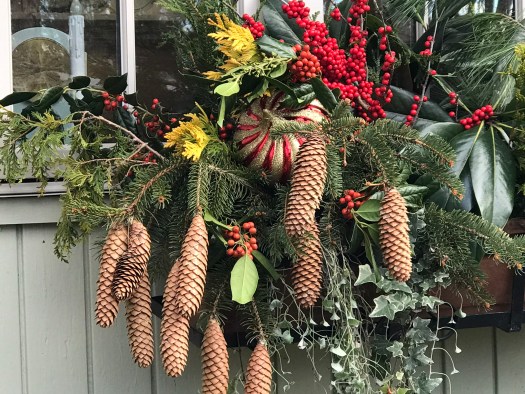
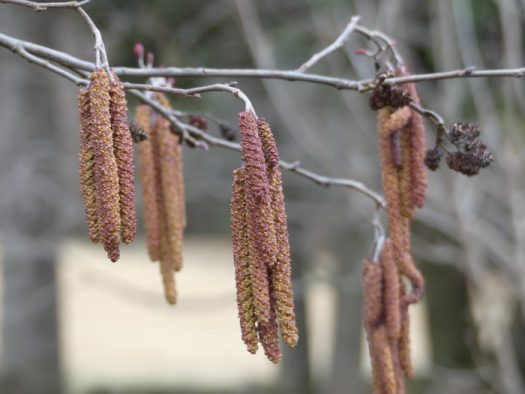
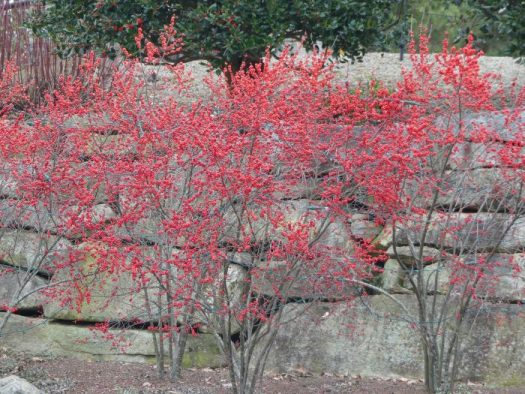
Tips for finding plants:
- Identify – Learn to identify what you are collecting, as you don’t want to collect anything poisonous or on the endangered or threatened species list. Wear long pants and closed-toed shoes to protect against ticks and poison ivy. You can even get ticks in the middle of winter.
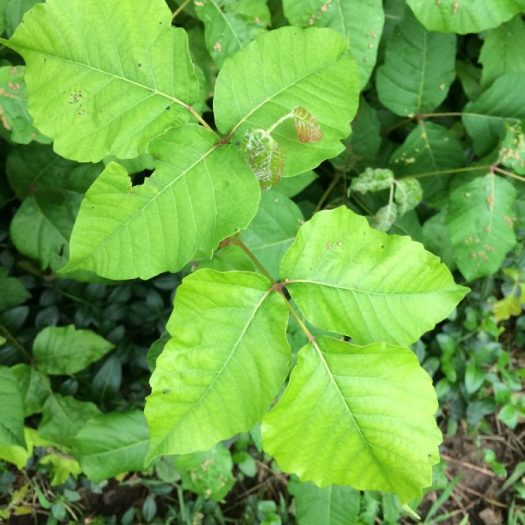
- poison ivy – If you don’t know what poison ivy looks like, simply Google images of this deadly plant before venturing out. Also, after the poison ivy leaves have fallen, I would be careful with any vines that you can’t identify. Poison ivy has white berries that birds enjoy during the winter, so be careful with white or grayish berries.

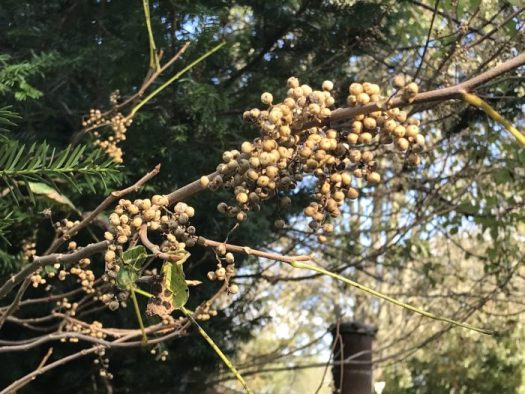
- Protection – If collecting on the roadside, use protective gloves. Do not park or stop on the side of a road. I try to find smaller country roads to collect. Always put safety first and only park where it is safe off the road.
- Be respectful – Follow the “Leave No Trace” principles and leave your pickup area the same or better than when you entered. Don’t leave it clean! And don’t dig up roots.
- Investigation – Do your research and do not collect plants from the list of threatened or endangered plants. Go to the USDA website at List of species for a state-by-state list. In my home state of Maryland, I don’t collect things like partridge berries, wild orchids, or ground pine, since many of them are on the endangered species list. If you are in the Pacific Northwest, look for Salal, an excellent broadleaf evergreen.
- Foraging Kit – Armed with insect repellent, pruners, scissors and buckets and collection bags, I scour the sides of the roads in search of potential prospects and always have a “foraging kit” in the back of my car.
- Twigs and branches – Beautifully colored branches, such as red and yellow dogwood twigs, curly willow, birch branches, and canes, are on my list to cut during the winter.
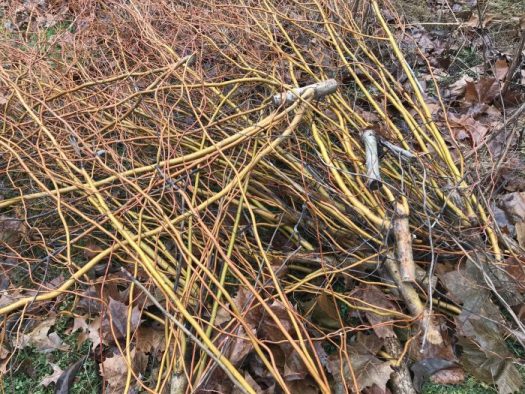
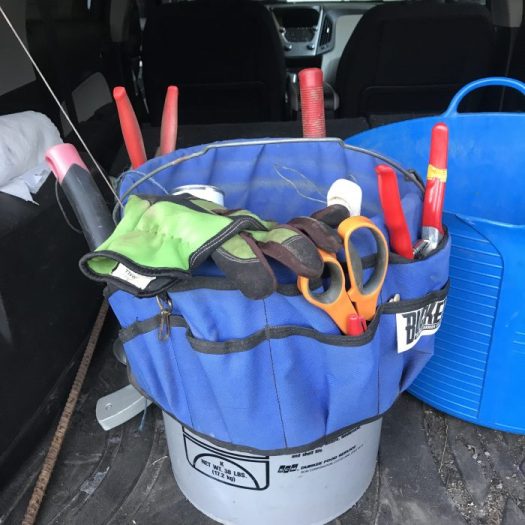
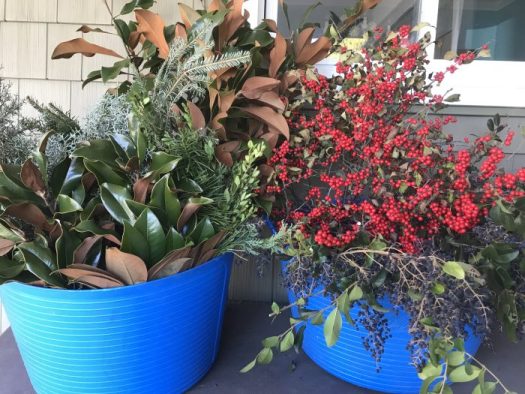
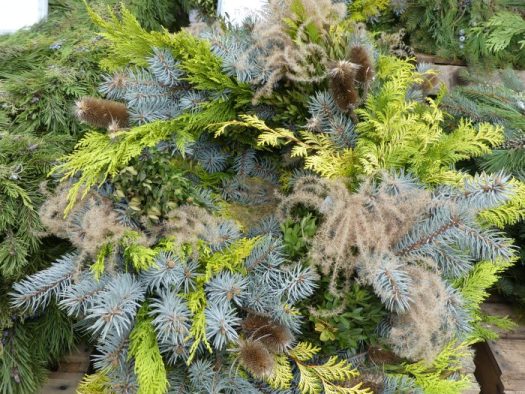
- Hydrate – When you bring your treasures home, remove all the bottom leaves/needles and soak them in buckets/traps filled with water in a cool place for at least several hours. I add a few sachets of packaged flower preservative to the water. Conditioning your fresh cuttings in this way will greatly prolong the life of your foliage. Keep them outside when the weather is cooler. I store them in a covered garage/carport, away from the sun.
- Antiperspirant-Spread the dried evergreens on a tarp and spray both sides with an antiperspirant, such as Wilt-Proof or Wilt-Stop. Antiperspirant, which covers evergreens with a waxy coating, will reduce and slow the loss of moisture in the freezing winds of winter, allowing evergreen tree branches to remain supple and cool for weeks.
- Be creative – Dried seeds and berries are excellent for arrangements. They also make excellent interesting twigs, lichens and pods.
- Ask! – Always ask permission if you are on private property.




Putting it all together: winter inspirations
There are big differences between an arrangement created by a florist and one collected; I worked in a flower shop and I know the difference. The foraged ones tend to look a little wilder and have things you would never find in a florist, like dock, seed heads, and pine cones. I prefer wild forage arrangements to tightly controlled florist arrangements where each stem increases the total cost. The arrangements collected don’t cost you a cent.


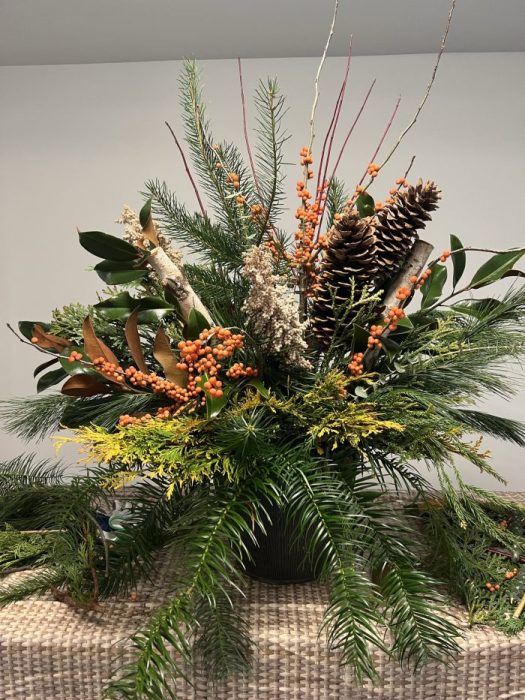


List of Suggested Foliage Materials for Foraging

Regional options are part of the fun when selecting berries, branches and foliage. In my mid-Atlantic region, I have a veritable candy box with options that include all types of conifers and berries. On the west coast, your selection would be even broader and you would have access to Salal and Eucalyptus.
I try to limit my materials list to five or six selections, vary the textures, and always include a broadleaf variety like Magnolia or Camellia to add contrast. If you stick with only fine-textured materials, you could end up with a “busy” container.
Oak Leaf Hydrangea (Hydrangea quercifolia) – The oak leaf-shaped leaves are leathery with beautiful fall hues that last a long time.
Cedar (Cedrus spp.) -The wispy evergreen branches of the scented cedar are an asset to any pot, placed over the edge of a pot.
Holly (Ilex spp.): Adding the prickly foliage of evergreen hollies (especially variegated ones) is a great addition to my arrangements, but only if I treat them with an antiperspirant first, as holly branches can dry out quickly. Berries also freeze and turn black in very cold weather, so holly is not my first choice for material.
white pine (Pinus strobus) White pines, both green and variegated, add wonderful frilly, long-needled fill to arrangements that arch gracefully out of the container.
Leyland Cypress (Cupressocyparis leylandii) – Commonly grown as a privacy screen, this fast-growing conifer offers green branches in the form of dark green scales that cover very well and last for months.
Spruce (Picea spp.) Norway, white, and blue spruce are on my list of great additions, with blue spruce being my favorite. Heavy branches can make this a little difficult to work with.
Laurel (Prunus laurocerasus, Laurus nobilis) A clump of broadleaf evergreens that adds substantial texture to a porch planter. Magnolias and camellias are my other favorite plants for broadleaf foliage.
Magnolia spp.-Adding rosettes of glossy, leathery magnolia leaves in an arrangement immediately adds “presence” and distinction. I am partial to all evergreen varieties, but Magnolia ‘Brown’s Bracken’ is my favorite as the underside has a unique velvety tan coloration. Magnolia’s spherical fruits with bright red seeds are a plus.
japanese cedar (Cryptomeria spp.): An elegant feathered cluster of this evergreen is sometimes tipped with interesting little cones. The emerald green color takes on a tan tone in winter, giving the arrangement extra dimension.
tree of life (Thuja spp.) Long-lasting, scale-like evergreen that I use as filler. The gold-tipped variety I often add, Berkman’s Golden Arborvitae, adds a pop of color to an all-green arrangement and looks wonderful with my yellow dogwood sprigs.
Cedar Incense (Caolocedrus decurrens) Not native to my area, but available on the west coast, this wonderfully aromatic, dark green evergreen hangs over the edge of a container as a spiller.
Boxwood (Buxus spp.) I thin my boxwoods in the fall by removing branches from congested shrubs to give them more room to breathe. The branches reach the flower pots on my porch.

